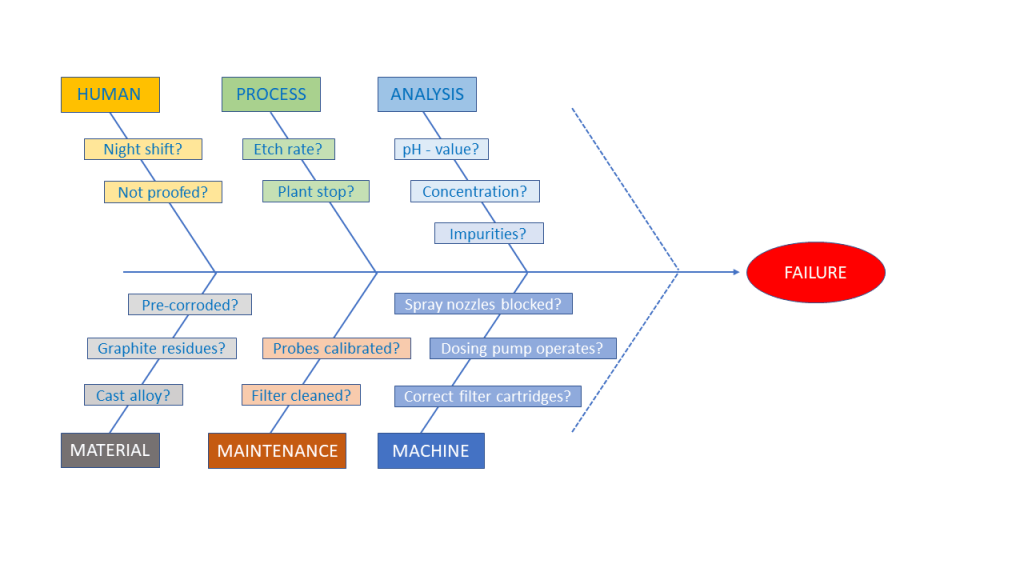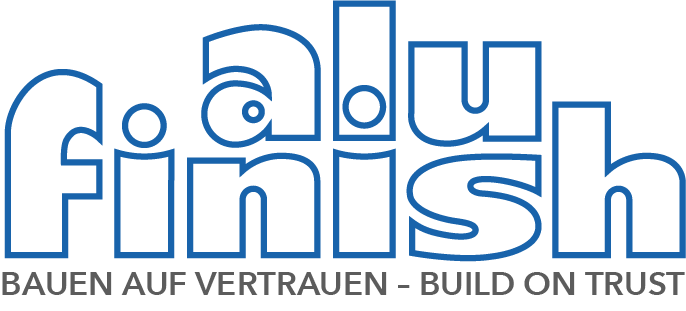In the realm of business, errors are inevitable, as they are in all human endeavours. While it’s common to swiftly identify individuals responsible for these mistakes, it is often later discovered that there might be an underlying cause. Adopting a structured approach is a more effective method for identifying and rectifying errors. In this context, the cause-effect diagram, also known as the Ishikawa diagram, serves as a robust tool, preventing aimless searches for faults.
For example, troubleshooting in pretreatment before powder coating could be structured like this:

This procedure certainly involves a considerable amount of work, but considering the threat of complaint costs, this is typically negligible and well worth the effort.
In the anodising sector, for example, the following short checklist is worth to be used for troubleshooting during pretreatment. It can of course also be expanded to include your own criteria:
-
- Where does the fault first occur? — Check the process chemistry step by step.
-
- Look for visual and chemical anomalies in the system (foam, precipitation, deposits, bath parameters).
-
- Material-related error or carelessness of the employees?
-
- Is a temporal allocation possible (“always” or e.g. only “at night”)?
-
- A creeping error? — Indicates an accumulation.
-
- Possible technical changes to the system during the fault period (clogged air pipe, heating failed, uncontrolled bath dilution)?
-
- Special features of the raw material known (surface condition, alloy)?
-
- Chemical incompatibilities (oiling-surfactants)? — Clarify with chemical supplier.
-
- Human error? — Wrong product added or not corrected at all?
-
- Maintenance intervals adhered to (bath change, measuring probes calibrated, filter system cleaned)?
